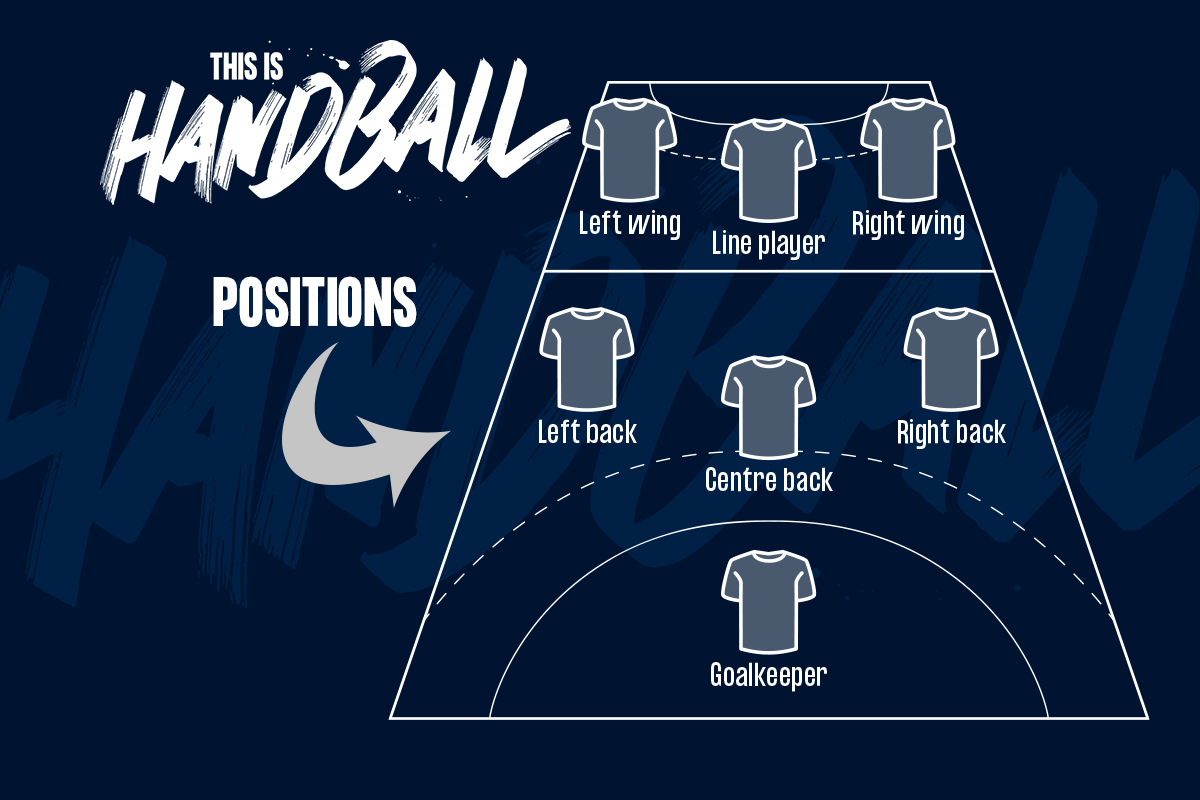Attack, possession and dribbling
The ball is moved around the court mainly by passing from player to player; however, players can also dribble the ball. In handball, dribbling typically involves bouncing the ball and catching it. The ball must be played within three seconds of receiving it, and players can only take three steps while holding the ball. Teams in possession must be obviously trying to shoot - if a referee thinks they are not doing so, they can signal 'passive play', giving the attacking team four passes to shoot or risk losing the ball to the other team.
Defence, fouls and penalties
Defenders can try and block the ball with an open hand, bent arms or their upper bodies. It is not allowed to push or hold on to an opponent, pull at their uniform, or pull the ball out of their hands. Referees may give yellow cards for minor infractions and two-minute suspensions combined with free throws or penalties (taken from the seven-metre line) for more serious fouls. Players who receive three two-minute suspensions in a match are given a red card and disqualified; direct red cards can be given for dangerous fouls, such as those targeting the head or neck of the opponent. If a player is disqualified, their team is short-handed for two minutes, but after serving this penalty, they can then have seven players back on court.
Goalkeeping
Only the goalkeeper may dive for and trap the ball when it is stationary or rolling on the ground in the goal area. Once the goalkeeper leaves the goal area, they must adhere to the same rules as field players. Other players may dive for a bouncing ball and tap it or throw it quickly to a teammate, but they cannot trap the ball with their feet.
Goal area
Only the goalkeeper is permitted to enter the goal area, and the other players are not allowed to touch the ball when it is on the ground in the goal area.
Out of bounds
If the entire ball passes across the side-line, the team that last touched the ball loses possession and the other team is awarded a throw-in.
Substitutions
Unlimited substitutions are allowed during a match. Substitutions can be made at any time as long as the player being substituted has left the court before their substitute comes on. Coaches can also choose to substitute a field player for their goalkeeper to increase their attacking advantage, or when a player is serving a suspension.
Time-outs
Coaches are allowed to call up to three one-minute time-outs during the match when their team is in possession. However, they are not allowed to call more than one time-out in the last five minutes of each period.
3. Referees' hand signals
Handball matches are officiated by two referees who work as pairs – in fact the same two referees always work together. They communicate to each other through radios, and to the players by using a whistle and hand signals. You can learn more about this in the referees' hand signals YouTube playlist.










































































































